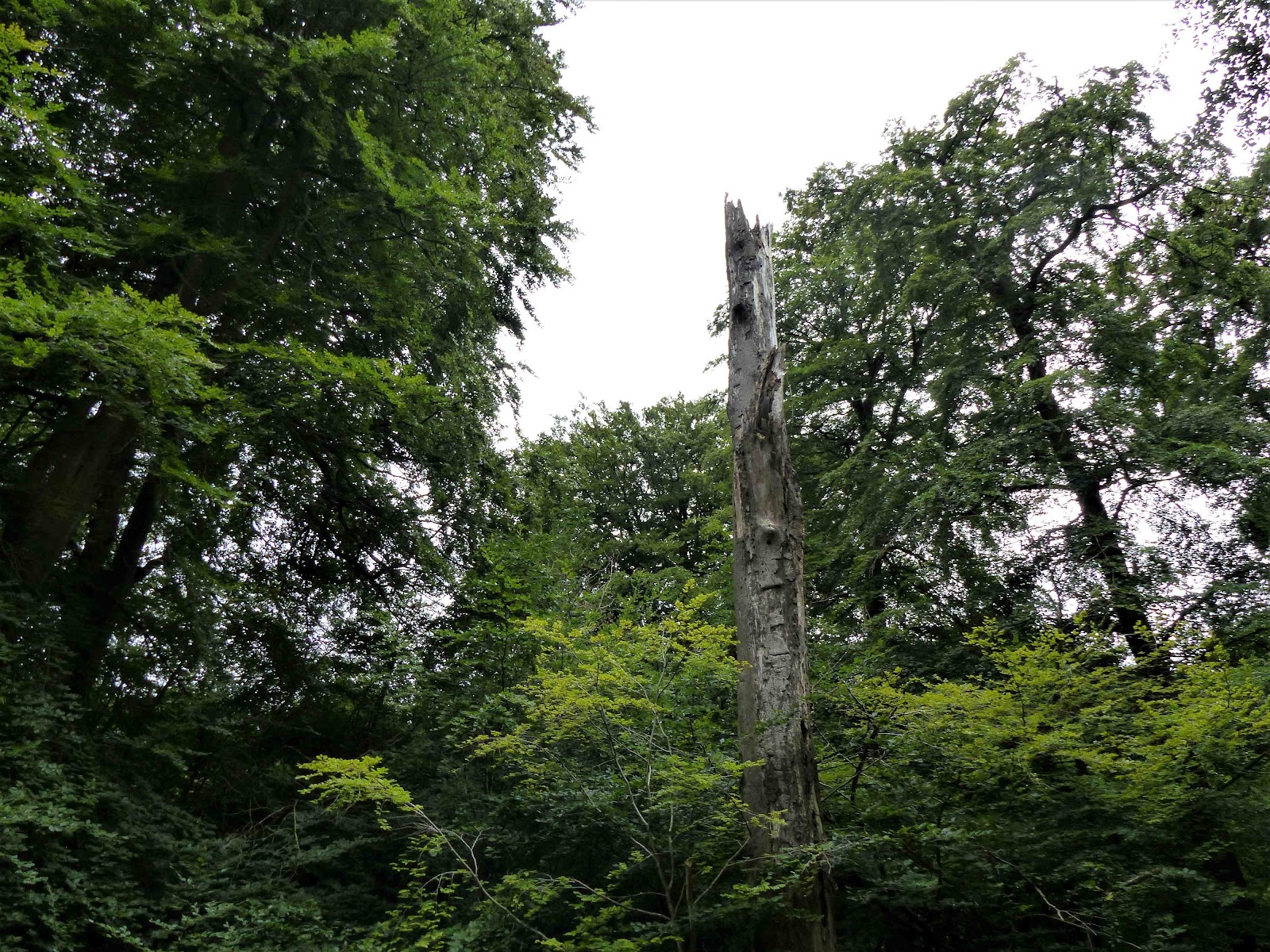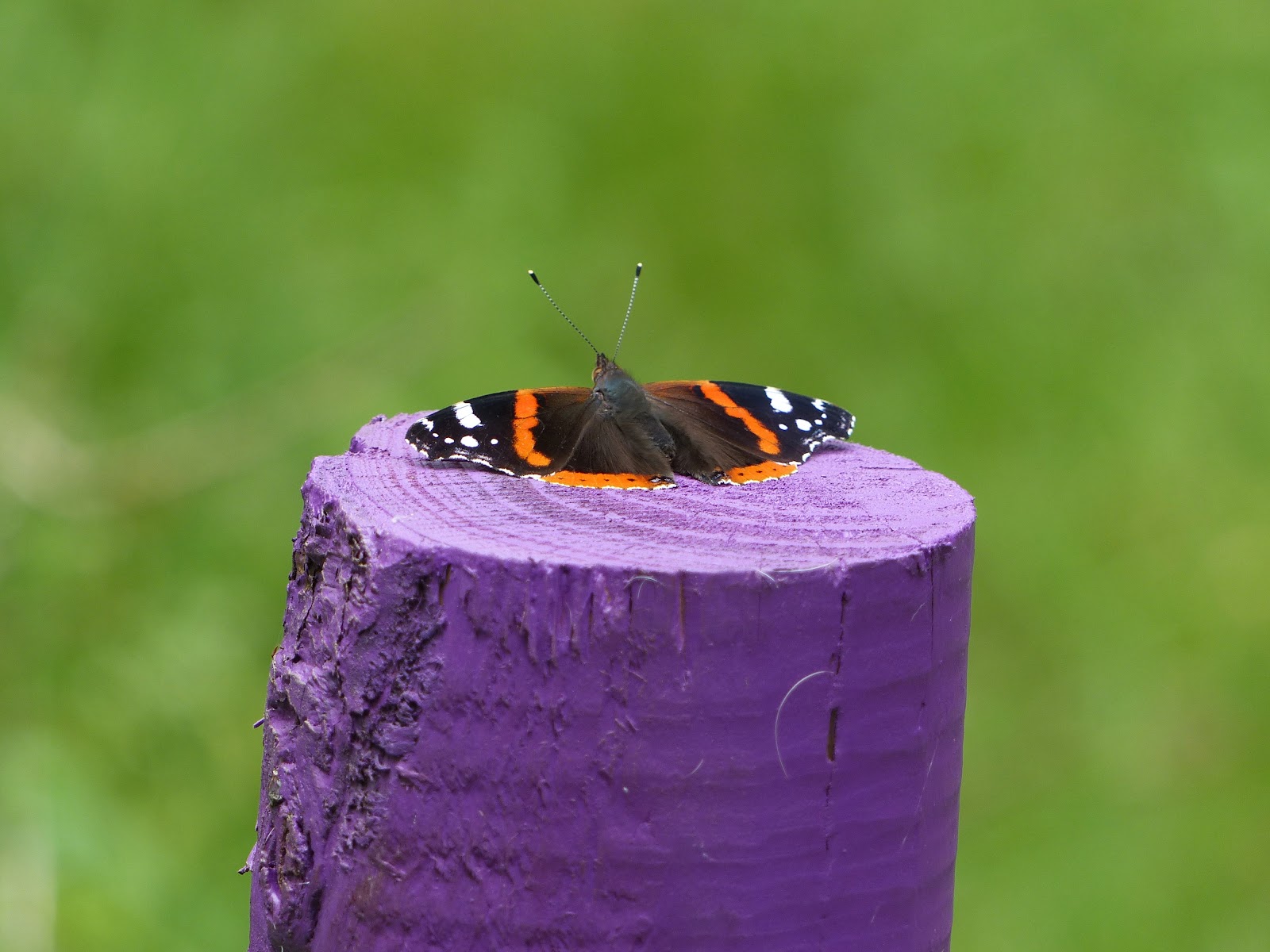Apols for the lack of postings, but I've had to retreat home, suffering from a severe attack of osteoarthritis of the knee (medical term for something crippling) - at the zenith of a surprisingly good Purple Emperor season. Can hardly stand, let alone walk - though I can cycle almost ad lib (non weight-bearing): I've done most of the Knepp Emperor season on my trusty ebike.
I'll be back in the saddle ASAP - as soon as NSAID (pills) and gym work (the real answer) kick in. The annoying thing is that I'd got the condition so well under control that I'd got off the NHS operation waiting list and was looking forward to my 20th Mountain Ringlet expedition - then caught a nasty virus (almost certainly in the gym), with arthritis kicking in afterwards, in my 'good' knee...
Worse, the jet stream has jumped south, and the weather has deteriorated...
At Knepp on Sun June 30th: Emperor males were sallow searching frenetically, in numbers, indicating a big emergence of females. Here's Herself drying her wings, having crawled off her pupal case -
She may not get mated until the following day. Also, importantly, the oaks are starting to produce the tiny sap bubbles that Emperors love above all other substances (sugar-rich, and probably fermenting). Here's a male feeding on one tiny bleed last Sunday (on Patrick's Tree, for those who know Knepp) -
Once the females are all out and mated, the males will cease to come down to the feed on the tracks at Knepp. A shame, as experiences like this will cease for the year (Neil Hulme, in paradise 24/6/24) -
Emperorial behaviour will worsen as the sugars and alcohol from the oak sap kick in...Elsewhere, congrats to Mark Tutton for observing Apatura iris in cop in Abbots Wood Inclosure, Alice Holt Forest, yesterday, July 1st. The male found the female over a sallow jungle, by 'sallow searching'; she led him up into the top of a nearby 80' tall oak, and they joined at 1.45pm. Then - wait for it - they mated for over five hours, establishing a new mating duration record!!! Gentlemen of England, we are outdone - by an insect...
Also, we have to report two Hobby attacks. At 11.35 on Sun 30th, a fascist Hobby viciously turned on an innocent Emperor who had done the decent thing, and had flown out of the Knepp oak canopy to intercept the intruder - fragments of purple wings gently fluttered down. Then, yesterday, July 1st, the same thing was observed at Bookham's famous Hill Farm Territory by Rob Hill.
One is armed only with a dazzling iridescence, faultless bravado, and an ego the size of the universe, the other is a vicious predator of insects. As Filch so aptly puts it in Harry Potter: 'I want to see some punishment...'










































